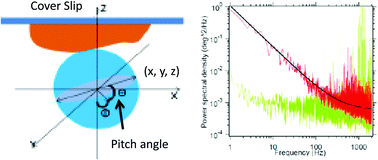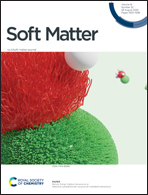Detection of sub-degree angular fluctuations of the local cell membrane slope using optical tweezers
Abstract
Normal thermal fluctuations of the cell membrane have been studied extensively using high resolution microscopy and focused light, particularly at the peripheral regions of a cell. We use a single probe particle attached non-specifically to the cell-membrane to determine that the power spectral density is proportional to (frequency)−5/3 in the range of 5 Hz to 1 kHz. We also use a new technique to simultaneously ascertain the slope fluctuations of the membrane by relying upon the determination of pitch motion of the birefringent probe particle trapped in linearly polarized optical tweezers. In the process, we also develop the technique to identify pitch rotation to a high resolution using optical tweezers. We find that the power spectrum of slope fluctuations is proportional to (frequency)−1, which we also explain theoretically. We find that we can extract parameters like bending rigidity directly from the coefficient of the power spectrum particularly at high frequencies, instead of being convoluted with other parameters, thereby improving the accuracy of estimation. We anticipate this technique for determination of the pitch angle in spherical particles to high resolution as a starting point for many interesting studies using the optical tweezers.



 Please wait while we load your content...
Please wait while we load your content...